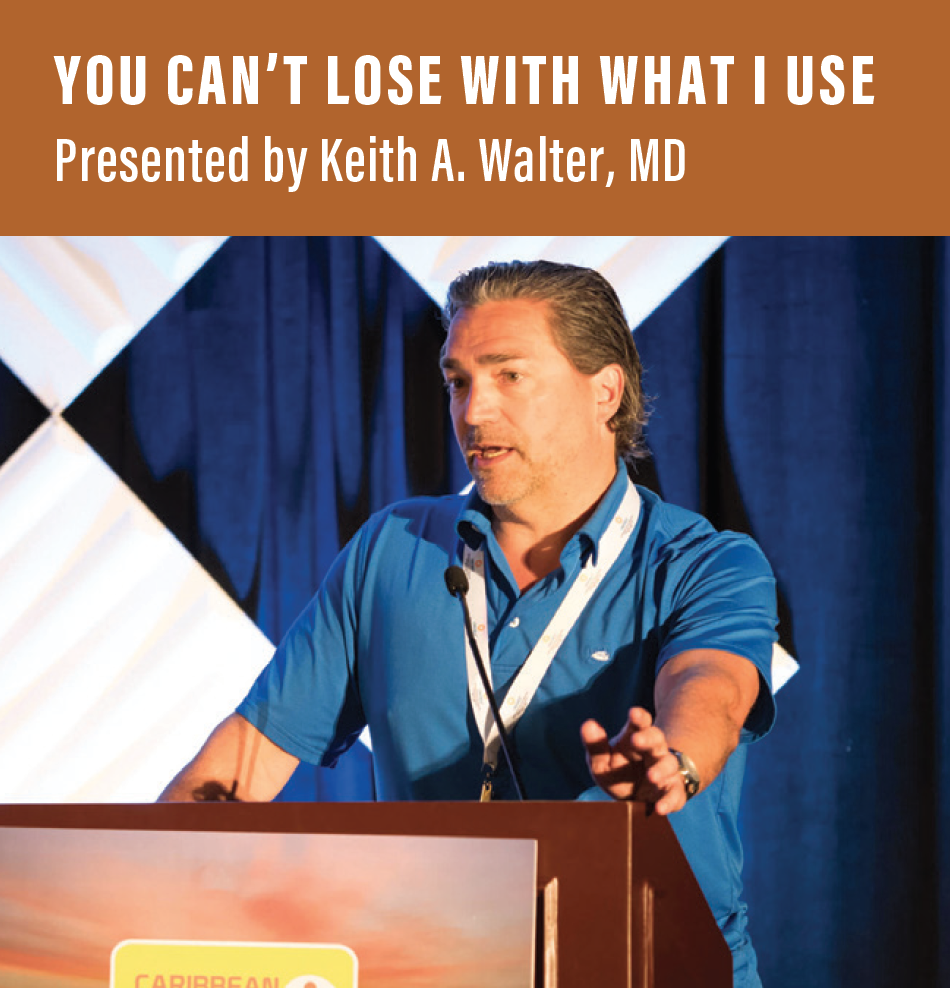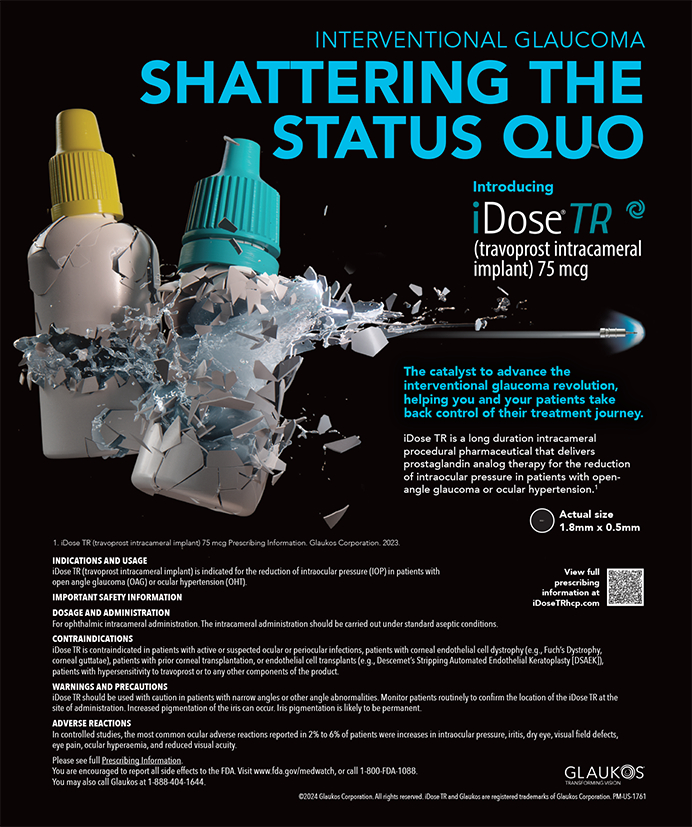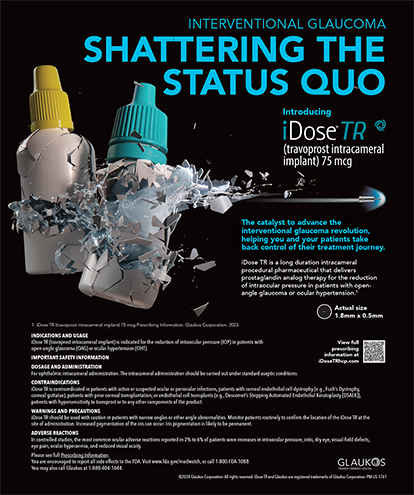Since the 1990s, the American College of Eye Surgeons (ACES), the American Board of Eye Surgery (ABES), and the Society for Excellence in Eyecare (SEE) have partnered and committed to promote, encourage, and enhance the quality of ophthalmic surgical care for patients. Each year, the organizations host Caribbean Eye, a 4-day meeting with a progressive agenda. Below are a few of the topics discussed during this year’s symposium.

Private equity (PE) is only one piece of the consolidation puzzle happening today in ophthalmology, Ms. Shuren said during the opening session of Caribbean Eye. In reality, many forces have come into play to promote consolidation efforts, and several viable options are available.
“We start to use [the term] private equity … to mean this whole concept of, ‘Does my practice need to grow? ... Why do I want it to grow?’” she said.
PE has become one of the hottest trends in the eye care space, but Mr. Isham outlined three additional models of consolidation that can also be valuable to the ophthalmologist: the merger; the management service organization; and the clinically integrated network. But before getting involved in any kind of business partnership, it is important for practitioners to identify the forces at work in consolidation. For starters, the Affordable Care Act triggered an uptick in coordinated health efforts in the form of accountable health organizations and other consolidated and integrated health care models. This, Ms. Shuren said, led to the concept that “bigger must be better, or is somehow necessary to survive and succeed.”
Another reason for consolidation is the “regulatory and administrative burdens” that make it difficult for small practices without scalable infrastructure to remain compliant with the requirements of the Merit-based Incentive Payment System (MIPS), Medicare Access and CHIP Reauthorization Act (MACRA), and Health Insurance Portability and Accountability Act (HIPAA), among others.
Consolidation has become more than just a fad because of the increasing complexity and skill that are required to effectively manage a practice, physician recruitment challenges, and the fact that the latest generation of physicians is less interested in being practice owners, Ms. Shuren said.
“I think there is going to be a long runway for [PE] to occur in eye care, but right now there is a premium for payments to organizations that are taking place,” Mr. Isham said.
During her overview of the surge of PE deals in ophthalmology, Ms. Shuren identified six main reasons why firms are interested in this sector of health care: the population is aging and the increase in the demand for services is steady; ophthalmology is a fragmented marketplace that is ripe for consolidation; services are primarily outpatient; there is an imbalance of physician supply and demand; multiple profit streams and cash/pay services are available; and data analytics can be applied to value-based reimbursement.

Establishing premium packages; getting patients to lose their short-term mindset, excuses, and perfectionism; and paying attention to femtosecond conversion rates are the best tools to help a practice reach its premium conversion rates, Dr. Jackson said during his talk.
No. 5: Establish your packages. There is nothing wrong with offering multiple cataract surgery packages, as long as you comply with regulatory guidelines and bill appropriately, Dr. Jackson said. He offers three levels to patients, called the basic, the legal to drive, and the forever young.
No. 4: Help patients to lose their short-term mindset. Find out who your patient is, and tailor the conversation to his or her visual needs. For example, Dr. Jackson explains to patients that the forever young package offers a lifetime of improved vision at all distances, whereas the legal to drive package offers a lifetime of distance driving without glasses.
“Most of our patients are on the elderly side, and their biggest concern is losing their independence, and driving is independence,” Dr. Jackson said. “But you have to get patients to give up their short-term mindset.”
No. 3: Help patients to give up their excuses. Using a lifestyle questionnaire can help to determine patients’ motivations and their hang-ups, such as the cost of surgery. “Bring the real perspective to patients on the perceived value of what premium means,” Dr. Jackson said, adding that it is important to explain to the patient that contact lenses or glasses are more costly in the end.
No. 2: Patients must give up their perfectionism. There is no perfect solution in cataract surgery, Dr. Jackson said, and patients have to commit to and trust the healing process associated with surgery. As the physician, you must help them establish realistic expectations.
No. 1: No matter what you do, consider the femtosecond laser. Dr. Jackson, who has a conversion rate of about 90%, said that patients relate well to a “GPS-versus-compass” analogy. “Almost everybody converts when I tell them that,” he said.

Sharing their perspective and clinical experience with small-incision lenticule extraction (SMILE), Drs. Augustine and Wiley stressed the importance of nailing the patient’s preoperative refractive workup and analyzing his or her refractive error “to a T.”
“When I am supplying this data to the surgeon, he may be the most elegant surgeon in the world, but if that data going in from a refractive standpoint is bogus, then certainly [the patient’s] outcomes will be as well,” Dr. Augustine said.
In the 150 patients that Dr. Wiley has treated with SMILE, he has not performed a single retreatment. “The take-home message is to really be careful in how you are analyzing the preoperative refractive error,” Dr. Augustine said. “[Consider] all the different variables; look at wet refraction, dry refraction, autorefraction—all these different tools that you may have—because it is going to save you from having any type of retreatment afterward.”
Before he began to perform SMILE, Dr. Wiley used the VisuMax femtosecond laser (Carl Zeiss Meditec) for about 1 year as a LASIK flap-maker. That helped him to become comfortable with the laser, so that the learning curve with SMILE was shortened.
“Any time you have a new procedure, you are not sure how it is going to go,” Dr. Wiley said. “There are learning curves and energy level adjustments, and we worked through this. [SMILE has] ended up being a great addition to what we are doing.”

Every surgeon has his or her own postoperative drop regimen for cataract surgery, but the recent trend has been toward prescribing fewer drops.
“We are still trying to go down on drops, but it seems like it is a struggle for us to come up with the best solution,” Dr. Walter said during his talk.
Regardless of the chosen regimen, the goals must be the same: to avoid endophthalmitis and cystoid macular edema, to reduce costs and patient callbacks, and to maintain great outcomes after cataract surgery. Dr. Walter said that he has been able to achieve these things using a one-drop therapy. For the past 4 to 5 years, his regimen is to use topical bromfenac alone; he prescribes it for patients to start 2 days before surgery and has them continue its use for 30 days after surgery.
For the past 1.5 years, Dr. Walter has also used intracameral moxifloxacin, diluted 1:1, injected into the eye with a sterile syringe at the end of each case. He avoids prescribing a postoperative steroid in all but about 1% of his patients. Steroid use is indicated for patients with rebound inflammation, previous uveitis, or a retained lens fragment.
“Are our orthopedic colleagues injecting steroids in there at the end of a case? They are not. Are they giving [patients a steroid] to go home with? They are not,” Dr. Walter said. “Because as eye docs we can see inflammation, we like to treat it, but I am not sure we absolutely have to treat it.”




